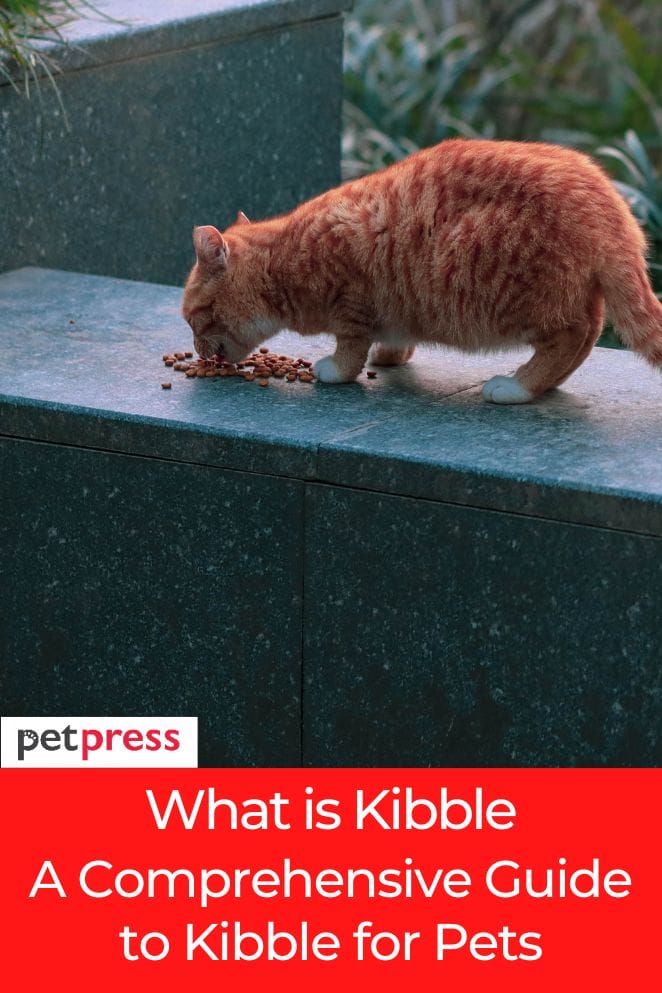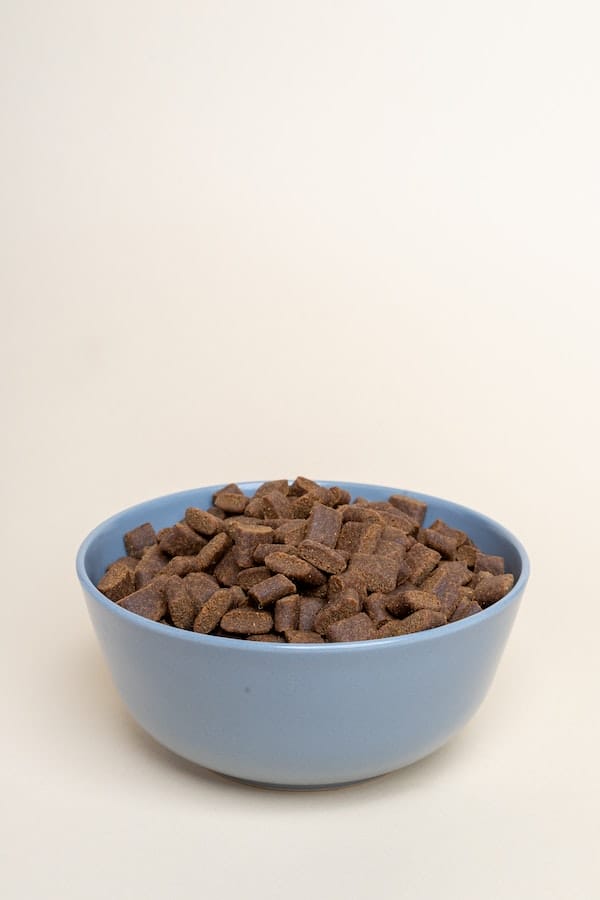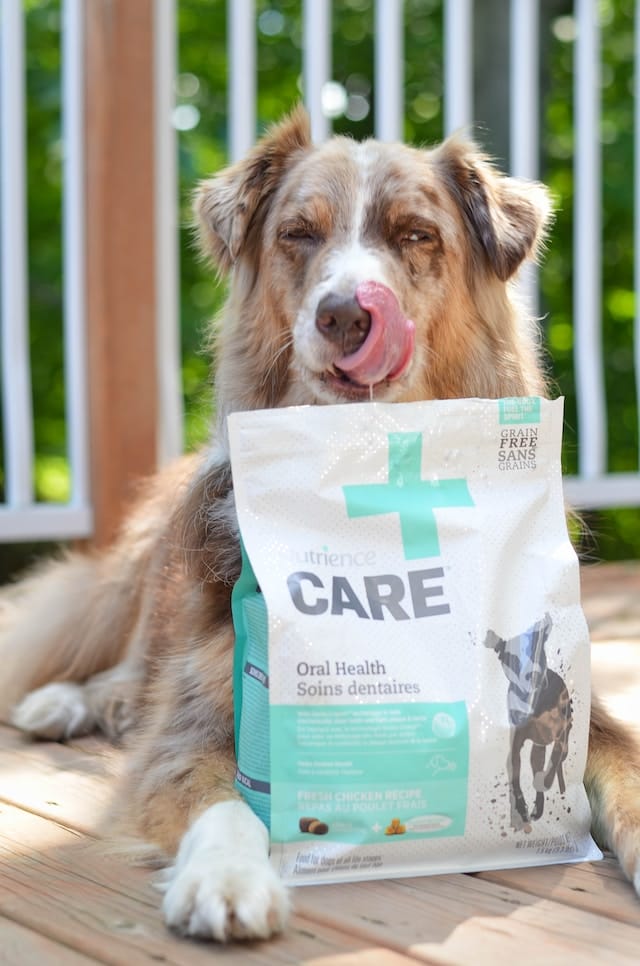
When delving into the realm of pet nourishment, the term “kibble” emerges as a recurrent and significant subject matter.
While it is familiar to many pet owners, a comprehensive understanding of its essence remains elusive.
Kibble, a prevalent form of pet sustenance used widely for dogs and cats, merits our exploration.
This article endeavors to elucidate the origins, manufacturing process, constituents, advantages, and drawbacks of kibble, enabling you to make an informed decision for your cherished companion.
The Origin of Kibble
The captivating history of kibble traces back to the early 1860s when a groundbreaking discovery unfolded.
James Spratt, an ingenious American electrician, observed stray dogs in London scavenging leftover ship biscuits.
This intriguing spectacle spurred him to envision a revolutionary product tailored explicitly for dogs.
Driven by this vision, Spratt embarked on an arduous journey of experimentation and innovation, resulting in the advent of the first commercially prepared dog biscuit.
This milestone invention not only furnished pet owners with a convenient and shelf-stable option but also marked a significant progression in the realm of pet nutrition.
Since its modest inception, the concept of kibble has evolved exponentially to meet the diverse needs of pets globally.
Presently, a diverse array of kibble options caters to various dietary requirements and preferences, offering specialized formulas for specific breeds and distinct life stages.
The world of kibble perpetually adapts to the ever-changing needs of our beloved four-legged companions.

The Kibble Manufacturing Process
The intricate process of kibble manufacturing involves a series of meticulous steps that metamorphose raw ingredients into the finished product.
Extrusion
Kibble’s genesis is intertwined with the process of extrusion.
Diverse ingredients, encompassing meats, grains, vegetables, and vitamins, amalgamate into a malleable dough-like amalgamation.
This amalgamation undergoes a transformation within an extruder, where heat and pressure orchestrate the culinary alchemy.
The once pliable concoction metamorphoses into the familiar shape of kibble, eventually culminating in the removal of residual moisture.
Coating and flavoring
Upon achieving a precise form, the kibble undergoes a delicate augmentation phase.
A curated selection of nutrients and flavorings delicately enshroud each kibble, enhancing both taste and nutritional value, and elevating its allure for our cherished pets.
The Ingredients in Kibble
The meticulously chosen ingredients within kibble are tailored to fulfill our four-legged companions’ nutritional requisites.
Protein sources
Kibble’s formulation entails an exquisite array of protein sources, encompassing chicken, beef, lamb, and fish.
This meticulous selection ensures the fulfillment of our pet’s nutritional needs.
Protein, the quintessential building block for robust muscles, radiant skin, and glossy fur, bestows holistic support to your beloved companion’s overall well-being.
Carbohydrates
Incorporating vital ingredients like rice, wheat, corn, and potatoes, kibble upholds the dual role of energy source and textural enhancement.
This harmonious combination of nutrients embellishes the pet food’s overall nutritional value, providing our furry friends the sustenance they deserve.
Fats and oils
The laudable incorporation of wholesome fats and oils within kibble secures the foundation for a lustrous coat, a fortified immune system, and optimal nutrient assimilation.
This blend of essential nutrients encompasses not only physical radiance but also augments your pet’s vitality and well-being.

Pros and Cons of Kibble
Kibble’s adulation and critique warrant a fair evaluation, enabling pet owners to navigate informed choices.
Pros
- Convenience: Kibble is not difficult to store and serve, making it a helpful choice for pet owners.
- Dental health: The crunchy texture of kibble can help in reducing tartar buildup and promote dental health.
- Balanced nutrition: High-quality kibble offers balanced nutrition for pets.
Cons
- Lower moisture content: Kibble for the most part has a lower dampness content, which may not be reasonable for pets who need more hydration.
- Processing: The extrusion process used in manufacturing kibble may reduce the bioavailability of certain nutrients.
- Quality varies: Not all kibble brands are made equivalent, and some might contain lower-quality ingredients.
Is Kibble Right for Your Pet?
Navigating the suitability of kibble for your pet entails careful consideration of various factors, including age, health condition, dietary predilections, and activity levels.
Consulting a veterinarian offers invaluable insights, guiding you toward a discerning choice that honors your pet’s unique needs and requirements.

Conclusion
Kibble, the venerated titan of pet sustenance, traces its roots back to the 1860s, its foundation fortified through the meticulous process of extrusion and the infusion of diverse, wholesome ingredients.
While convenience and dental benefits elevate kibble’s appeal, the uniqueness of each pet warrants astute assessment, considering moisture needs and varying brand quality.
As responsible pet custodians, aligning our choices with our pet’s specific nutritional needs ensures their health and happiness, securing a radiant companionship that stands the test of time.
FAQs
While not necessary, adding some wet food to your pet’s kibble can increase moisture intake and add variety to their diet.
Look for kibble with high-quality protein sources and minimal fillers, and consider your pet’s specific dietary needs.
While most pets can digest kibble without issues, some may have food sensitivities, making alternative diets necessary.
Store kibble in an airtight container in a cool, dry place, away from direct sunlight.
It’s recommended to choose a specific formula designed for puppies or kittens, as they have different nutritional requirements than adult pets.


GIPHY App Key not set. Please check settings